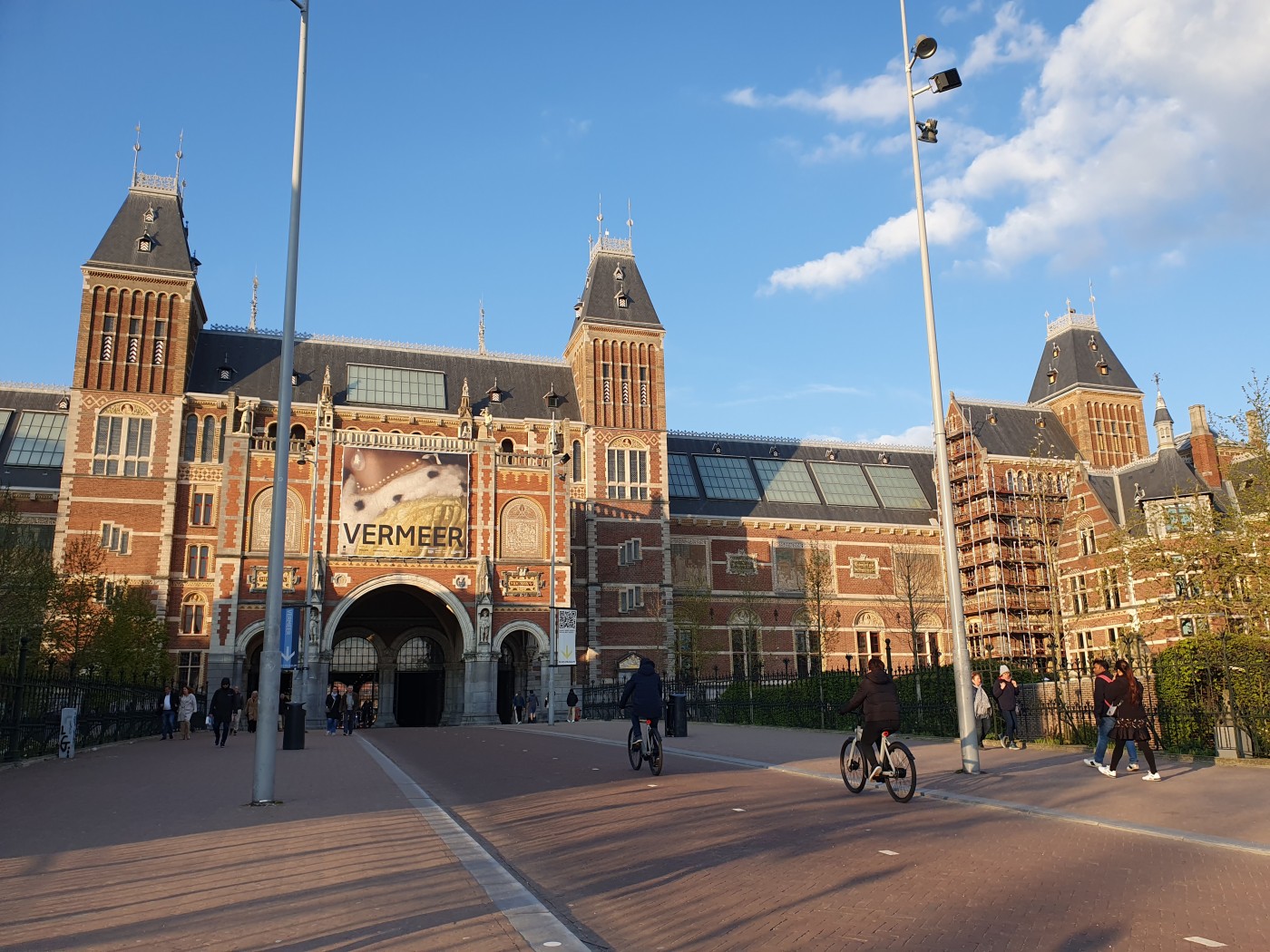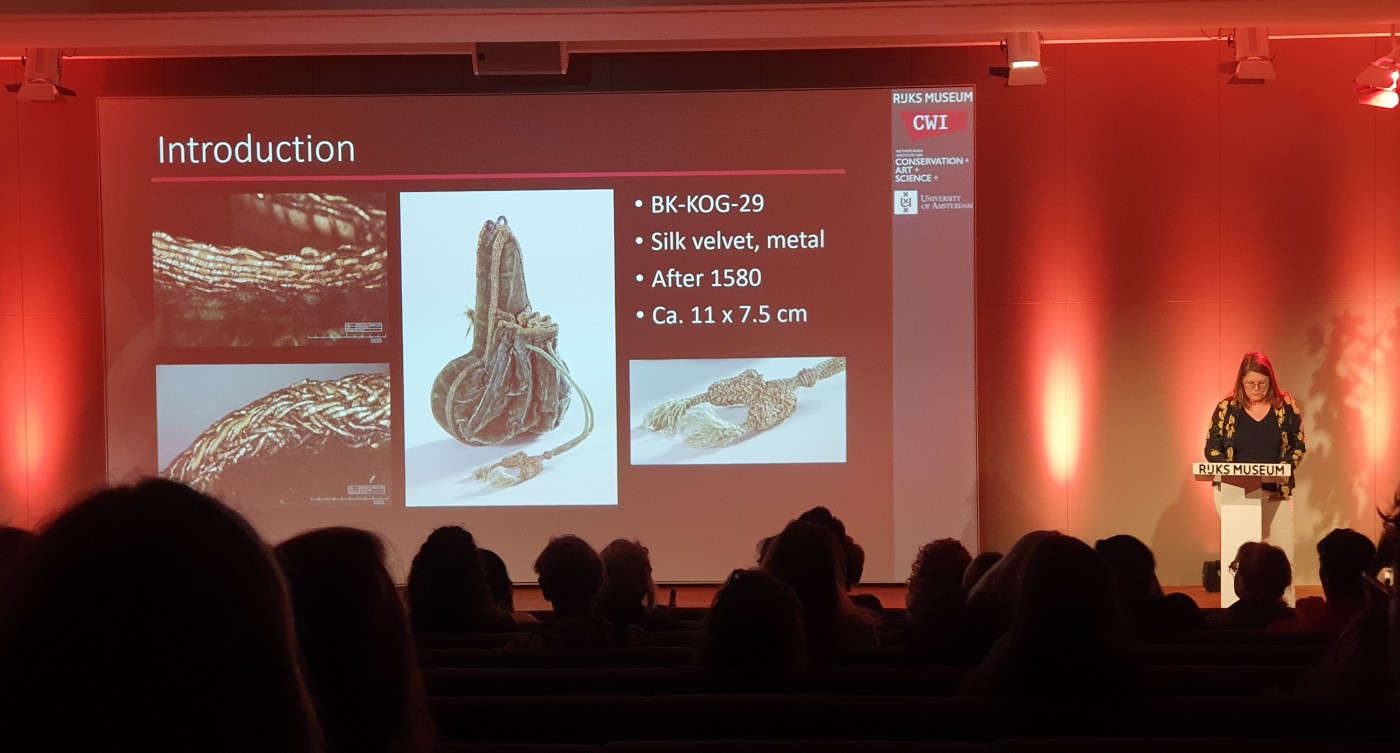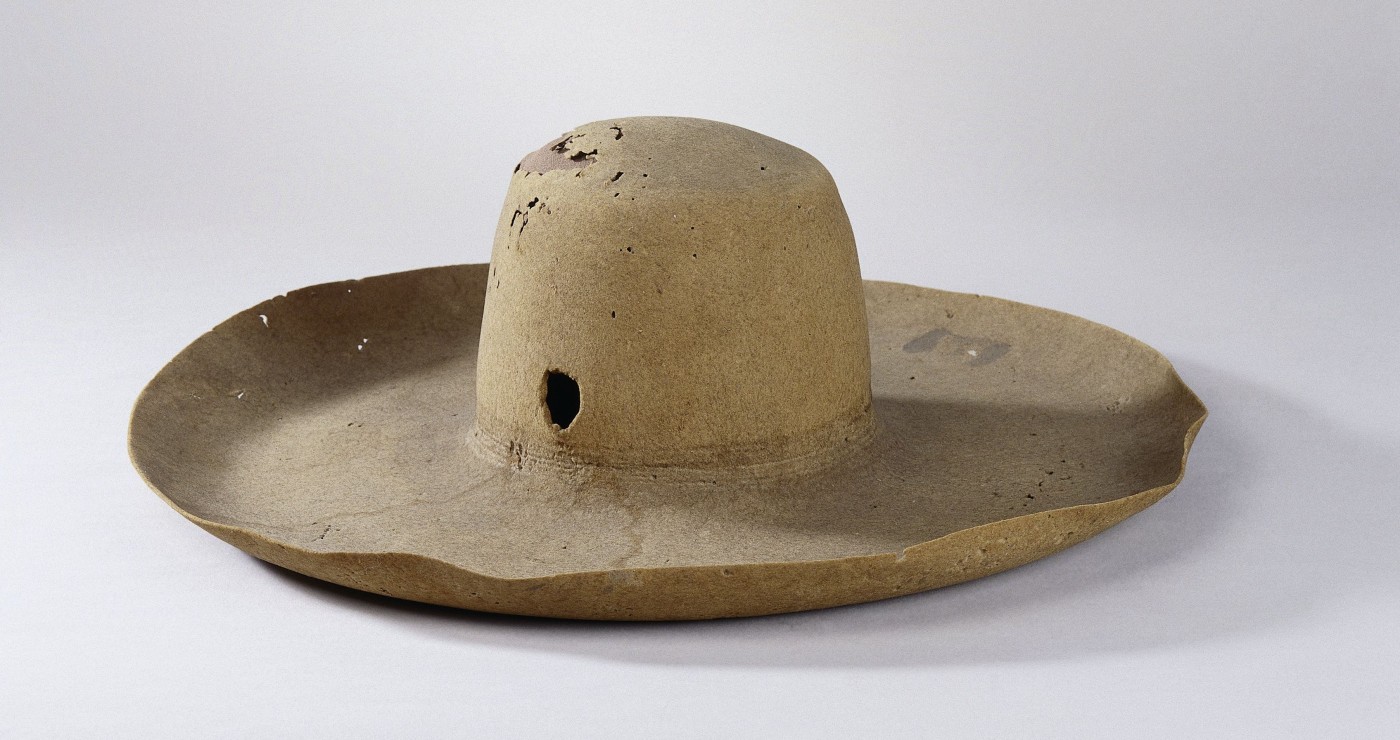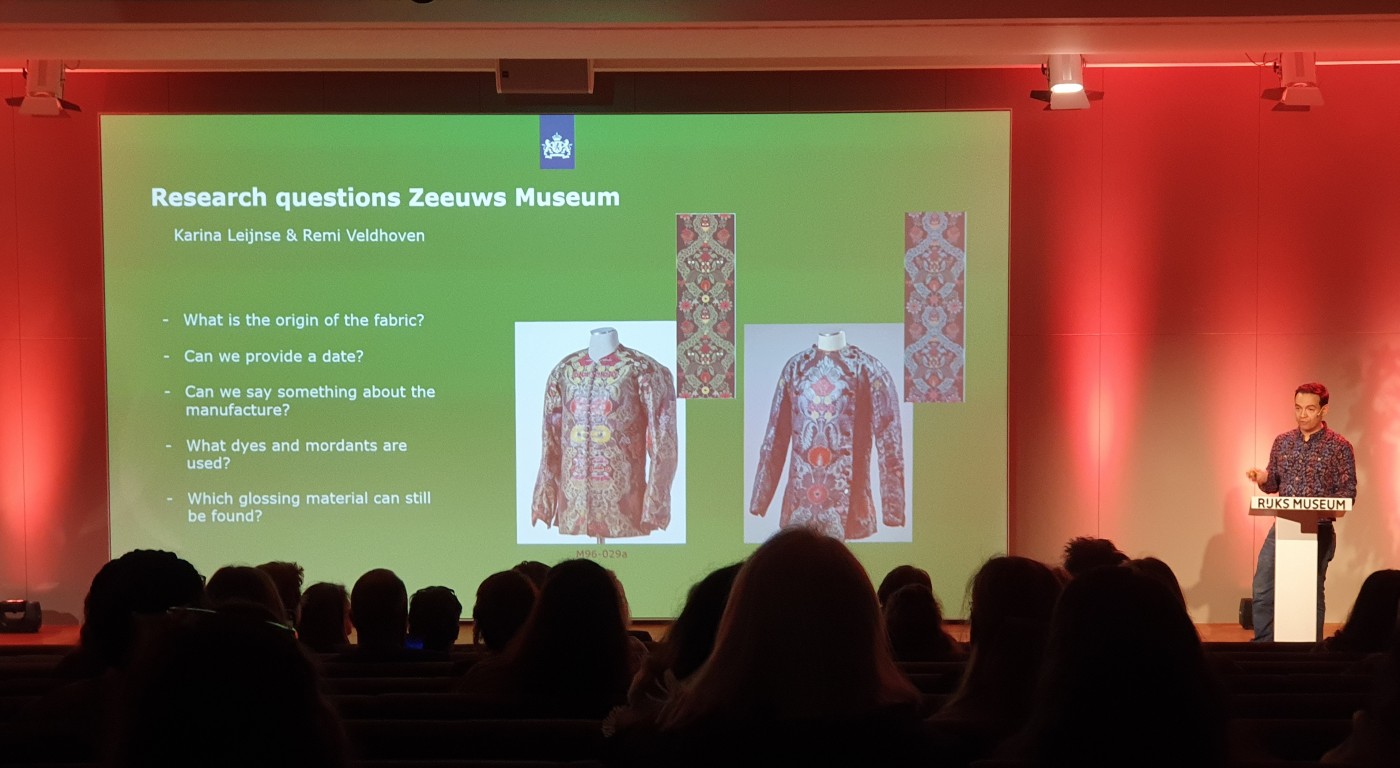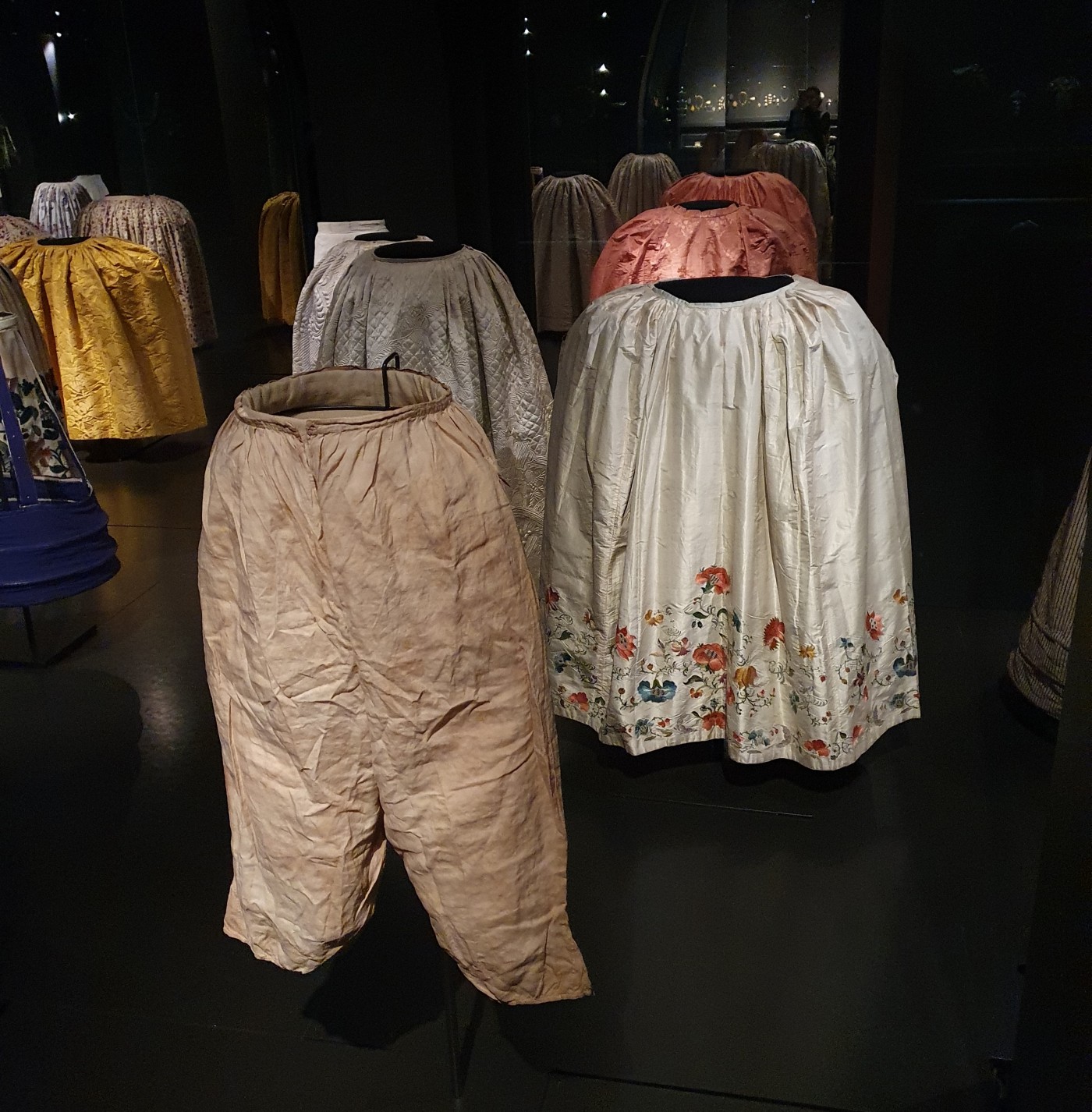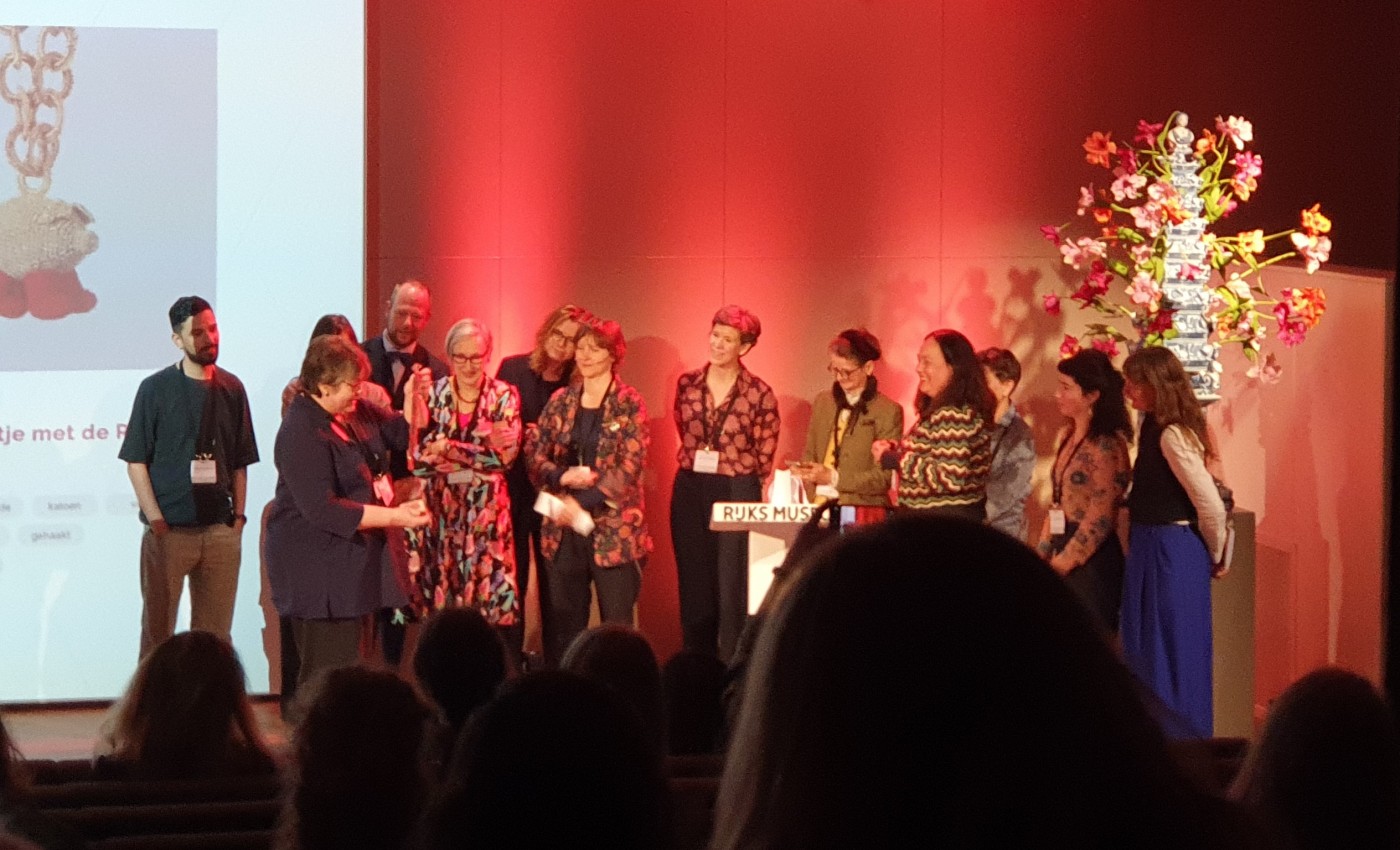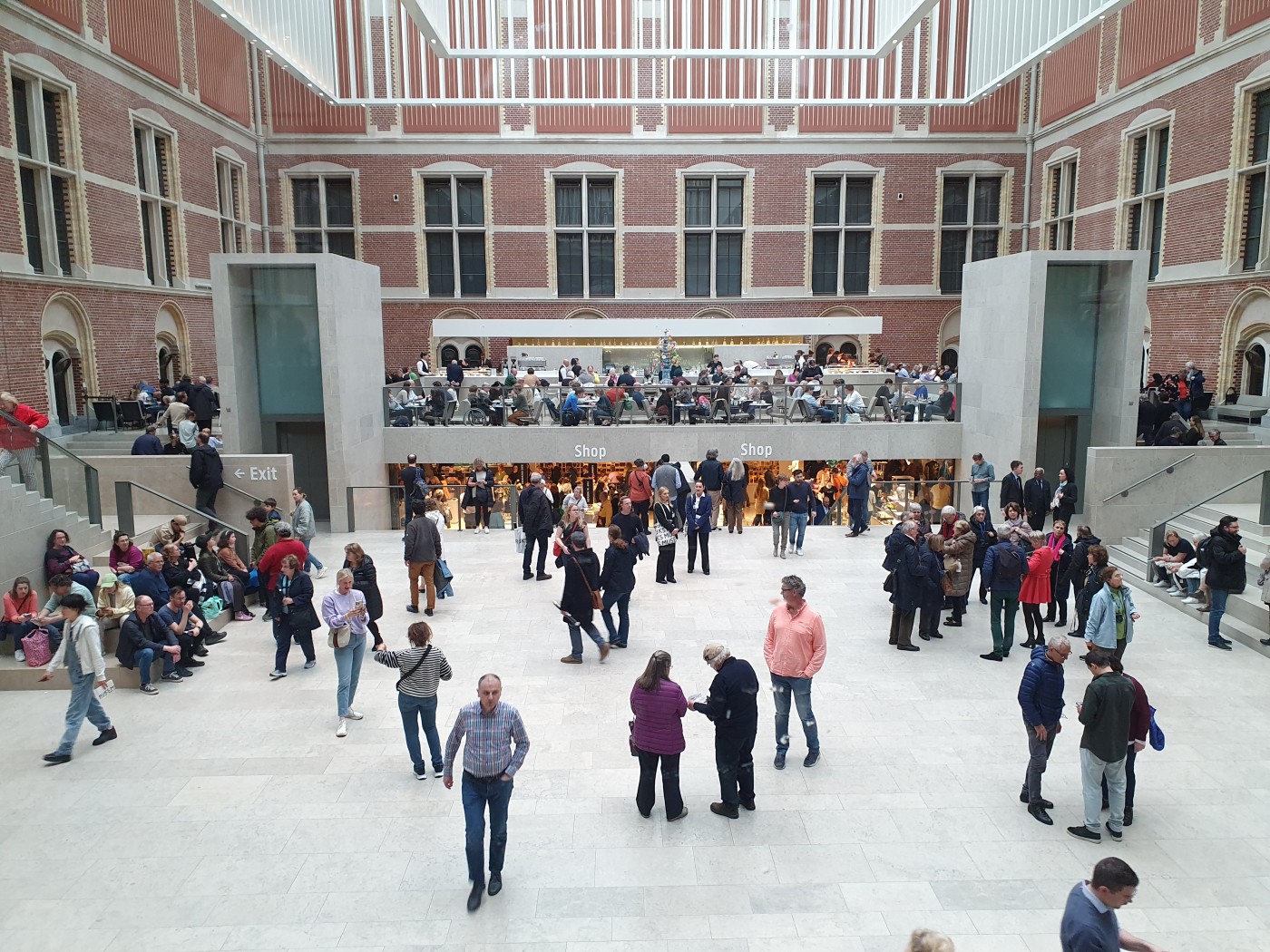- youtube
- bluesky
- Home
- About
- Costume Journal
- Membership
- Conference & Events
- Grants & Awards
- News & Social
In this week's blog, historian and curator Ruth Egger details the recent conference 'Under the Magnifying Glass', held at the Rijksmuseum in April 2023. Ruth provides insight into the fascinating topics covered at the conference by a breadth of speakers, held in honour of the Rijksmuseum's Curator of Costume Bianca du Mortier's retirement.
In honour of Bianca du Mortier’s retirement after almost 43 years of working as a Curator of Costume at the Rijksmuseum in Amsterdam, the museum hosted the conference “Under the Magnifying Glass” on 20 and 21 April. Invited speakers included colleagues and friends from various institutions in the Netherlands as well as renown guests from the United Kingdom, France, Germany and the United States of America. With over two hundred people attending, the conference was a full success presenting insights into ongoing projects and stressing the value of taking a closer look at objects, the use of modern technology and interdisciplinary collaboration.
Following a brief introduction from Hendrikje Crebolder, Director of Development and Media, Bianca welcomed her guests by sharing her story of how she started at the Rijksmuseum and showing some of her favourite objects in the collection. After a meeting with Madeleine Ginsburg in 1980, Bianca decided to apply for the job in Amsterdam and got what she described as “Willie Wonka’s golden ticket”. Tucked away in the storage facilities, she started to open all the boxes with wonderful dresses and accessories. However, Bianca quickly decided that she needed the help of the Textile Conservators to learn more about the actual materials and techniques, thus establishing a very close collaboration with them. The fact that she continuously kept an office space within the conservation studios was repeatedly described as extraordinary by her international counterparts.
An example of Bianca’s persistent nature presented itself in her insistence on acquiring a portrait of Johanna Le Maire (ca. 1601–1660). The painting depicts a pair of wedding gloves that were already in the museum’s collection and which provided the cover image for the conference. When the portrait first came on the market in 1990, Bianca immediately recognised the connection between the objects and suggested its acquisition. Her proposal was rejected, since the painting’s quality was deemed too low. When it came back on the art market ten years later, Bianca intervened again and secured the object for the Rijksmuseum. This pair of objects now makes one of the rare examples of a surviving accessory together with a visual depiction of itself and the wearer.
Being a big fan of The School of Historical Dress, Bianca invited Jenny Tiramani as a keynote speaker. In her talk, she proposed four main elements of looking at and understanding objects: Content (referring to the materials and techniques), Cut, Construction and Context. With regard to the last point, Jenny Tiramani emphasised that researchers should dare to say if something is not entirely clear and that an interpretation is not necessarily the truth. She underpinned her statement with a reference to the well-known Bacton Altar Cloth, described as only surviving remnant of a dress worn by Queen Elizabeth I (1533–1603). While she herself was originally convinced of this, Jenny Tiramani now explained that it is very unlikely that the cloth was part of a royal skirt since the fabric was pieced together with the embroidery stitched over it, and because the fabric would not drape well in the way it was cut. Instead, it’s unusual cross shape suggests that the textile could have been used as a canopy for the Queen.
One of Bianca and her colleague Suzan Meijer’s favourite objects in the collections is a 16th-century phallic shaped purse. Using Computed Tomography, Francien Bossema showed that the interior of the curious shape consists of multiple layers. A comparison with archaeological objects by Marijn Stolk revealed that the interior was probably made of felt.
The importance of interdisciplinary research at the Rijksmuseum was again vividly illustrated using the example of a felt hat in which Ernst Casimir I, Count of Nassau-Dietz (1573–1632), was shot. For the TV series Historisch Bewijs, the team conducted a DNA analysis proofing that the object definitely belonged to Ernst Casimir. A reconstruction shooting demonstrated that the bullet hole stems from
an actual gun shot while the accompanying bullet in the collection was
not the one, he was shot with.
Current projects presented at the conference included the collaborative research project Burgundian Black (Jenny Boulboullé). Denis Bruna provided an insight into the history of beards and moustaches, a topic that can be further explored at the current exhibition at the Musée des Arts Décoratifs. The history of the 18th-century dress collection at the Palais Galliera was delineated by Pascale Gorguet Ballestros. Lesley Miller reflected on her object-based research on the couturier Cristóbal Balenciaga, while Zenzie Tinker revealed the conservation practices behind the new presentation of the funeral effigies at Westminster Abbey. Marian Leech presented her research on the trades of fur and wampum, a shell bead also used as substitute currency, between North America and Europe.
Contributions from Dutch colleagues included a talk by Madelief Hohé who reflected on her last 20 years as Curator of Fashion at the Kunstmuseum Den Haag, and an introduction to the history and process of making boiled leather objects by Inge Specht and Fleur Dingen, both Curators at the Dutch shoe museum Het Schoenenkwartier. Gieneke Arnolli presented the curious wanderings of 17th-century stockings between Iceland, Spitzbergen and the Netherlands. Furthermore, Bianca’s colleagues from the Rijksmuseum discussed the analysis of embroidered objects in black and white (Mieke Albers) and of pearls and gems verifying whether they are “real” or “fake” (Suzanne van Leeuwen).
Several presentations illustrated the use of modern technology in presenting and researching fashion and textiles. 3D scanning of objects such an 18th-century silk dress from the Germanisches Nationalmuseum (Adelheid Rasche and Sabine de Günther) or a 19th-century court dress worn by the Japanese Meiji Empress Shoken (Joanna Marschner) allows for an immersive experience that goes far beyond the short-term period of a public exhibition.
A very insightful talk was given by Art Proaño Gaibor, a chemical analyst specialising in the analysis of dyes. Using chromatographic and spectrophotometric methods, he proofed that two 17th-century hemdrokken, a Dutch kind of men’s clothing, with similar patterns, one blue and the other green, originally had the same colour. While one of them was glazed and thus retained its original colour, the other one oxidated over time. Moreover, Yoram Goedhart conducted a forensic investigation of 18th-century breeches from a grave in Spitzbergen. He discovered that the remains of human skin and hair probably belonged to the deceased while polyester fibres and cat hair came from the people later handling the object. These technological changes inspire new questions for the future: Will we be able to improve 3D scanning to a level where we can also capture the inner layers of objects? Can we trust the colours of the textiles in our collections or have they changed over time?
As a special treat, all participants of the conference got the chance for an exclusive visit to the “Vermeer” exhibition, which is already sold out. If you are also curious to learn more about these incredible paintings, you can delve into Vermeer’s world virtually. A presentation of underwear from the museum’s collections is still on display at the Rijksmuseum and marks the last exhibition curated by Bianca du Mortier.
After so many stimulating presentations and much praise for the former Curator of Costume, Bianca’s efforts to promote the study of fashion have not come to an end. During various talks, the digital platform Modemuze, directed by Mila Ernst, was mentioned. The Dutch-Flemish cooperation of 18 museums, curators, students, academics, makers and collectors seeks to inspire new research and ways of engaging with objects. In this community of friends and colleagues, Bianca wants to continue her work. Overall, the conference showed highlights of her long career and gave everyone an insight into her remarkable personality with her eye for detail, innovative ideas and team spirit, all coming with a good sense of humour. I wish her all the best for her retirement and for the future projects ahead!
Image gallery
